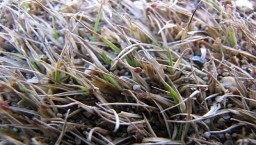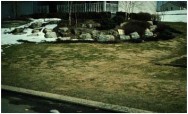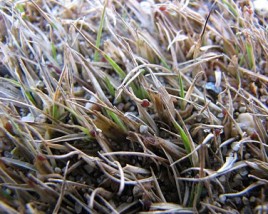Disease Profile: Snow Mold
As the snow begins to melt, you may find your lawn full of circles or patches of dead-looking grass. While severe Winter conditions or late fall damage is often to blame, it is far more likely your turf is suffering from Snow Mold.

Understanding Snow Mold
Pink and Gray snow mold can occur under certain Winter conditions:
What It Looks Like – There are two main types of snow mold; Pink and Gray. Both diseases appear in circular dead patches ranging from 3”-12” wide, however, if it is severe, these patches can form together and cover most of the lawn. If you look closer, you may see fuzzy webbing along the edges or even masses on the blades of grass (sclerotia). When the lawn is still wet the webbing may appear pink or salmon in color, to distinguish between the two types. It is not uncommon for a lawn to be affected with both Pink and Gray molds at one time.

What Causes Snow Mold – Snow mold is caused when there is a snow cover that is not completely frozen for an extended period of time. Ideal conditions are when temperatures range between 30-40 degrees. The disease grows in long grasses under snow or wet leaves when not taken care of prior to the Winter season. Some turfgrasses are more susceptible to snow mold, but all types can get it
Prevention – It is very important to remember to “Put the Lawn to Bed.” A properly mowed, watered, and fertilized lawn is the best defense against snow molds.
- Mow the lawn until it stops growing
- Clean up your leaves and debris
- Manage thatch with aeration
- Use a Winterizing fertilizer
Treatment – As the weather warms and snow melts, chances are that the disease will go away on its own. Once the areas have fully dried with the temperature increase, the grass will begin to repair itself and the disease will grow out as you mow. To help speed this process, lightly rake the affected areas and fertilize the lawn to encourage drying and grass growth. If there are remaining dead spots, a reseeding may be required. Fungicides are not recommended for this disease as the damage is temporary and the lawn will heal on its own.
